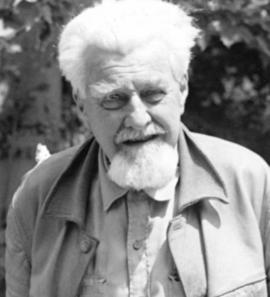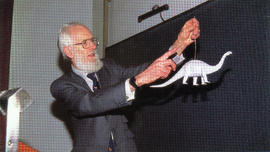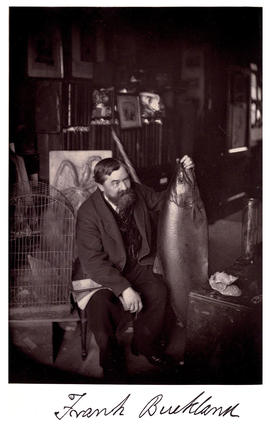Annie Porter (married name Fantham) was an English zoologist and Honorary Parasitologist to the Zoological Society of London. Annie Porter was the daughter of S. Porter of Brighton. After studying at University College London, she moved to the Quick Laboratory in Cambridge. From 1914 to 1917 she was Beit Memorial Research Fellow at the University of Cambridge. In 1915 she married fellow zoologist Harold Benjamin Fantham. From 1917 to 1933 Porter was Head of the Department of Parasitology at the South African Institute for Medical Research in Johannesburg. She was also Senior Lecturer in Parasitology at the University of the Witwatersrand. From 1933 to 1938 she was a research associate in zoology at McGill University
William Homan Thorpe was Professor of Animal Ethology at the University of Cambridge, and a British zoologist, ethologist and ornithologist
Gathorne Gathorne-Hardy, 5th Earl of Cranbrook, styled Lord Medway until 1978, is a British zoologist, biologist, naturalist and peer. Since 1956, he has been active in the fields of ornithology, mammalogy and zooarchaeology
Konrad Zacharias Lorenz was an Austrian zoologist, ethologist and ornithologist. He shared the 1973 Nobel Prize in Physiology or Medicine with Nikolaas Tinbergen and Karl von Frisch. He is often regarded as one of the founders of modern ethology, the study of animal behaviour. He developed an approach that began with an earlier generation, including his teacher Oskar Heinroth. Lorenz studied instinctive behaviour in animals, especially in greylag geese and jackdaws. Working with geese, he investigated the principle of imprinting. Although Lorenz did not discover the topic, he became widely known for his descriptions of imprinting as an instinctive bond. Lorenz's work was interrupted by the onset of World War II and in 1941 he was recruited into the German Army as a medic. In 1944, he was sent to the Eastern Front where he was captured by the Soviet Red Army and spent four years as a German Prisoner of War in Soviet Armenia. Lorenz wrote numerous books, some of which, such as King Solomon's Ring, On Aggression, and Man Meets Dog, became popular reading
Robert McNeill Alexander was a British Zoologist and an authority in the field of biomechanics. Until 1970 he was mainly concerned with fish, investigating the mechanics of swim bladder, tails and the fish jaw mechanisms. Subsequently he concentrated on the mechanics of terrestrial locomotion, notably walking and running in mammals, particularly on gait selection and its relationship to anatomy and to the structural design of skeletons and muscles.
Alexander was born in Lisburn, Northern Ireland and educated at Tonbridge School, Trinity Hall, Cambridge and the University of Wales.
After holding a lectureship at University College of North Wales 1958-1969, he was Professor of Zoology at the University of Leeds from 1969 until his retirement in 1999, when the title of emeritus professor was conferred on him.
He was Secretary of the Zoological Society of London 1992-1999. He was President of the Society for Experimental Biology 1995-1997, President of the International Society of Vertebrate Morphologists 1997-2001 and editor of the Proceedings of the Royal Society B 1998-2004.
Alexander married Ann Elizabeth Coulton in 1961. He died in 2016 at the age of 81.
Paul H Harvey is a British evolutionary biologist. He is Professor of Zoology and was Head of the Zoology Department at the University of Oxford from 1998 to 2011 and Secretary of the Zoological Society of London from 2000-2011, holding these posts in conjunction with a professional fellowship at Jesus College, Oxford.
He was educated at the University of York, where he was awarded a Bachelor of Science and a Doctor of Philosophy degree.
He was elected a Fellow of the Royal Society in 1992. He was awarded the Scientific Medal and the Frink Award from the Zoological Society of London, the J. Murray Luck Award from the National Academy of Sciences, and the University of Helsinki Medal. He was appointed Commander of the Order of the British Empire in 2008.
Geoffrey Allan Boxshall is a British zoologist and Merit researcher at the Natural History Museum, working primarily on copepods.
Son of Jack Boxshall a Canadian bank manager and Sybil Boxshall (nee Baker), a civil servant in the procurement department of the Ministry of Defence. He was educated at Churcher's College, Petersfield 1961-1968. He earned a First Class BSc in Zoology in 1971, and a PhD in 1974 from the University of Leeds. In 1994 he became a Fellow of the Royal Society, and in 1998 he was awarded the Crustacean Society's Award for Excellence in Research.
In 1974 he joined the Natural History Museum's Department of Zoology, and joined Life Sciences in 2014. He had been the Secretary of the Zoological Society of London since 2011 and was Vice-President of the Linnean Society Council from 2012-2013.
Sir Martin Wyatt Holdgate was born in 1931 and grew up in Blackpool. He was educated as Arnold School. He then attended Cambridge University as an undergraduate at Queens' College, Cambridge from 1949, graduating in 1952 with degrees in zoology and botany and, subsequently, a doctorate in insect physiology.
He taught at Manchester University, Durham University and Cambridge, as well as undertaking expeditions to Tristan da Cunha, south-west Chile and the Antarctic. He was CHief Biologist to the British Antarctic Survey, then research director of the Nature Conservancy Council and, for eighteen years, Chief Scientist and head of research at the Department of the Environment. Subsequently, he was Director General of the International Union for Conservation of Nature. After his retirement he was a member of the Royal Commission on Environment Pollution and served as co-chair of the Intergovernmental Panel on Forests, and Secretary of the UN Secretary General's High-Level Board on Sustainable Development. He was President of the Zoological Society of London 1994-2004.
Better known as Frank Buckland, he was an English surgeon, zoologist, author and natural historian. He was born in a noted family of naturalists. Frank was the first son of Canon William Buckland, a geologist and palaeontologist, and Mary Morland, a fossil collector.
He studied surgery under Caesar Hawkins at St George's Hospital. During this time he became acquainted with Abraham Dee Bartlett, Superintendent of London Zoo, who would send him dead animals at the zoo and he continued to keep many animals. Buckland was made a MRCS in 1851. He was appointed House Surgeon at St George's in 1852. He left St George's in 1853 and in August 1854 he joined the 2nd Life Guards as an assistant surgeon. This appointment left him time for his growing interest in natural history. Buckland gradually gave up medicine and surgery to devote himself to natural history and he was a pioneer of zoöphagy. He was one of the key members and founded of the acclimatisation society in Britain, an organisation that supported the introduction of new plants and animals as food sources which was influenced by his interest in eating and tasting a range of exotic animal meats.
Sir Arthur Everett Shipley was an English zoologist and Vice-Chancellor of the University of Cambridge.


